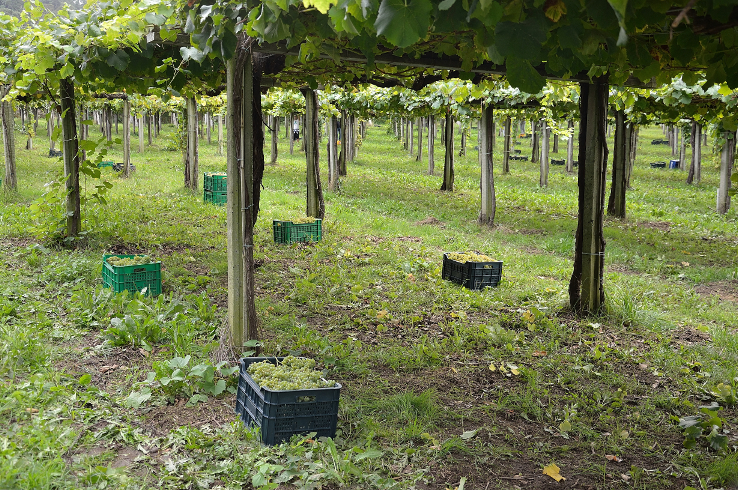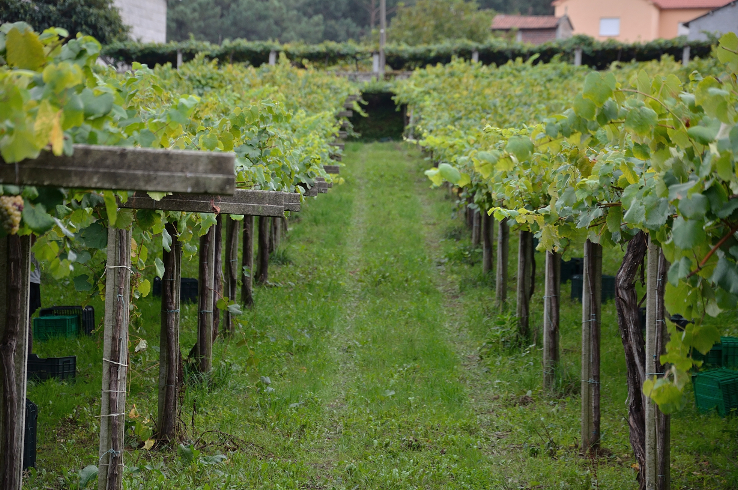2020 Viña Cartin Rías Baixas Albariño
Quintessential is the only word I can use to describe this wine. It comes from the ancestral home of Albariño, located directly on Spain’s Atlantic coast. It’s bright and refreshing… a solid weeknight staple.
Sustainable farming practices and hand-harvested.
- Tasting Notes Meyer lemon, clementine, citrus pith, honeydew, white grapefruit, marcona almond, sea salt
- Variety Albariño
- Region Spain, Rias Baixas
- Volume 750ml
- Alcohol Volume 13%
- Table Talk This wine comes from Val do Salnés, which many call the birthplace of Albariño.
Viña Cartín was founded in 1977 in Spain’s Salnés Valley, the oldest of Rias Baixas’ five subregions. In 2003, Viña Cartín moved their operations to a new location—an old winery in the heart of the area—and refurbished its interior with modern technology, yet maintained the estate’s artisanal character.
Contrary to the many regional wineries who purchase fruit, Viña Cartin proudly owns and sustainably farms 50 acres of their own vines. This direct access to the source allows them to control the raw material from start to finish. The estate’s vines average 30 years in age and benefit from the influence of the nearby Atlantic ocean. The resulting wines are bright, balanced, and laden with natural acidity.
ALBARINO
A pleasantly refreshing light white wine. Most known from Rias Baixas in Spain, but additionally as Vinho Verde in Portugal. Albariño’s are generally high in acid with refreshing citrus fruit flavors and a notably saline mineral character due to the regions’ proximity to the ocean. Serve these wines well-chilled while eating fish tacos on a hot summer day, you won’t be disappointed.
GALICIA, SPAIN
Part of what can be referred to as “Green” Spain, Galicia is located in the upper north west corner of the country. Wine production here dates back to the time of the Romans. It is one of the coolest areas producing refreshingly crisp Albariño with strong mineral characteristics as well as elegant red wine from the Mencía grape. Galicia boasts five denominated wine regions (DOs) including the infamous Rías Baixas, the closest DO to the Atlantic ocean.
Related Items
-
NV Loredan Gasparini Prosecco Asolo Superiore Brut
$21.00These grapes come from the legendary “Belvedere Vineyard” in the historic Prosecco Superiore area. The winemaking is precise and the result is a clean Prosecco with no addition of sugar. It’s a tart and refreshing glass of bubbles, sans the sugar hangover.
Organic farming practices, native yeast fermentation, and the winery uses 100% renewable energy.
-
2023 Fattoria Corzano e Paterno ‘Terre di Corzano’ Chianti DOCG
$30.00When it comes to Italian reds for summer, we want something smooth, easy-drinking, moderate in alcohol and not overly grippy—and this wine delivers. It’s bright and savory with just the right amount of structure to stand up to pasta al ragù or grilled lamb, yet refined enough to sip on its own.
Organic farming practices, hand-harvested, native yeast fermentation and less than 2,666 cases produced annually.
-
2021 Railsback Frères ‘Les Rascasses’ Rosé
$30.00Lyle and Eric Railsback began making wine together as Railsback Frères to produce rosé, inspired by Lulu Peyraud and the old style of Bandol rosé. This wine pays homage to Lulu Peyraud of Domaine Tempier and her infamous bouillabaisse recipe. If you aren’t going to make bouillabaisse, enjoy this with ceviche, summer squash pasta, or our Herbed Goat Cheese & Caramelized Onion Galette.
Organic farming practices, hand-harvested, direct-to-press, native yeast fermentation, aged in neutral French oak barrels for 6 months, no fining or heavy filteration, only 2,400 cases produced.
-
NV Conquilla Cava Brut (half-bottle)
$12.00*These half-bottles make the cutest place cards for a Paella party!
This vibrant and refreshing sparkling born along the sun-drenched Spanish coast is one of our “party picks.” It’s made like Champagne, more interesting than Prosecco and it’s affordable! Crisp and dry, enjoy this with oysters, grilled fish, tapas or bruschetta.
Sustainable farming practices, estate-grown fruit, and aged for 12 months on the lees.










